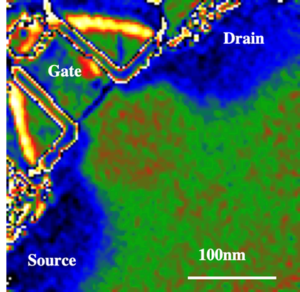Electron Holography
Prof. Martha McCartney, Arizona State University
Abstract

Off-axis electron holography in the transmission electron microscope provides a unique and powerful approach to quantitatively accessing the phase shifts of the electron beam after interaction with the sample and thus the ability to visualize electric and magnetic fields within materials. In this tutorial, we will briefly discuss the theoretical background of the technique and the equipment needed to realize it. We will also go over the rather stringent sample preparation requirements for a successful experiment and the image processing steps needed to access the desired phase shifts. Finally, we will show some examples of applications of holography applied to nanometer-scaled electrostatic and magnetic fields, including in situ hysteresis of magnetic nanoparticles and biasing of electrostatic semiconductors.
Biosketch

Martha R. (Molly) McCartney is currently an Emeritus Professor in the Physics Department at Arizona State University (ASU). She has a B.S. degree from The Evergreen State College, Olympia, WA, in 1982 and a Ph.D. degree in physics from ASU in 1989. Her research has been on the development and applications of off-axis electron holography for the quantitative measurement of nanoscale electrostatic and magnetic fields with very high spatial resolution and sensitivity, enabling unique insights into nanoscale physical phenomena. She has published more than 207 journal papers with more than 7500 citations and 10 book chapters, she was awarded the 2009 Ernst Ruska Preis by the German Microscopy Society for her work on holographic imaging of magnetic materials, and she is a Fellow of the American Physical Society and of the Microscopy Society of America.
